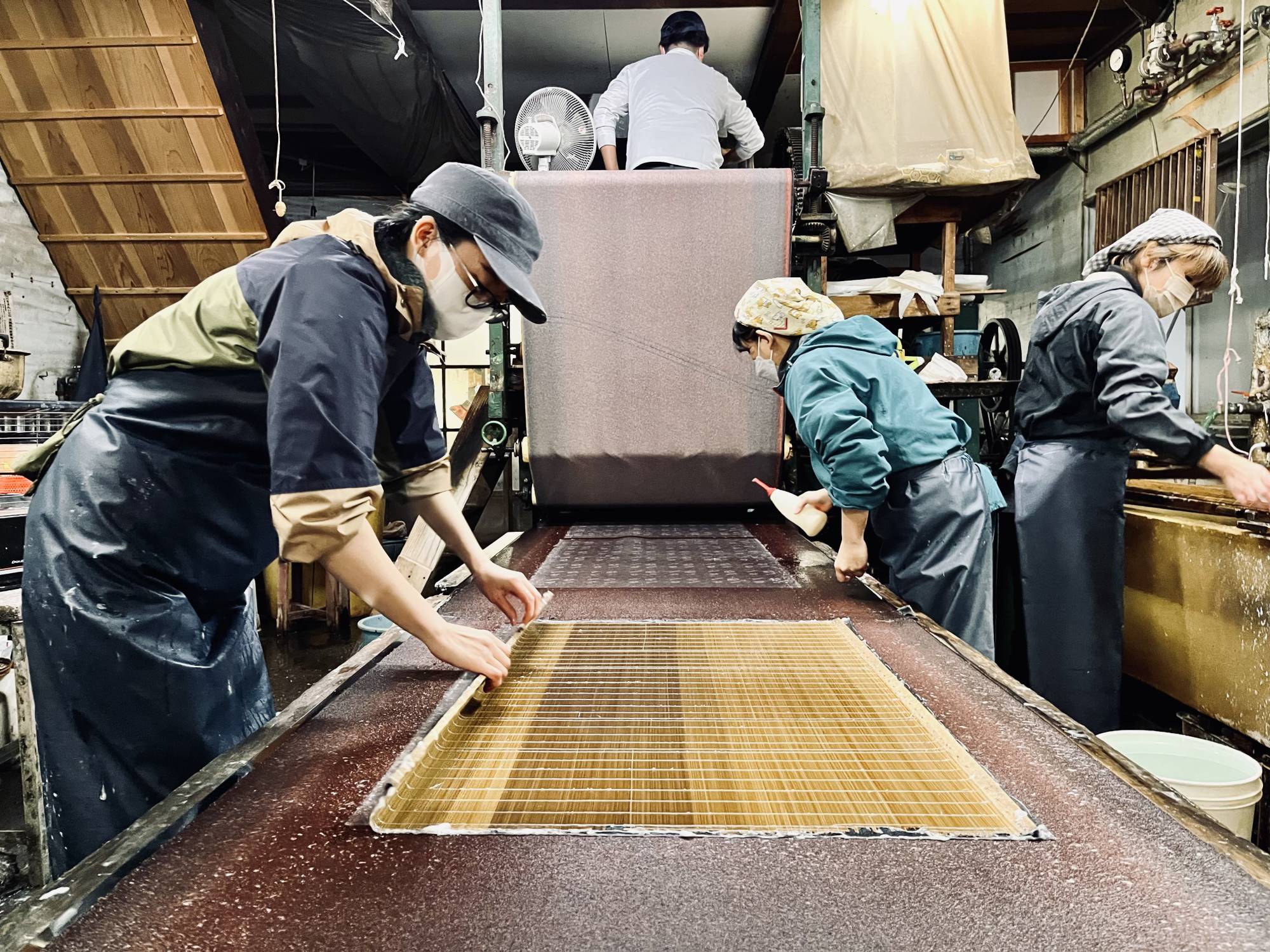I grip the handles of the sugeta, a large, hinged wooden frame fitted with a flexible silk and bamboo screen. I had just dipped it into a vat of paper pulp, a viscous, cloudy liquid the consistency of egg whites, and there was now an ice-cold puddle of it pooling on the screen. The frame is 85-centimeters wide, and even suspended from an overhead beam with rope, the sugeta is heavy enough that I struggle to keep it level.
Kyoko Yanase steps in to guide my shaky arms, gently swinging the frame back and forth until the liquid is evenly distributed across the screen. Then, she helps me plunge the frame back into the vat below.
Outside the washi (traditional Japanese paper) mill, the streets of Iwamotocho, Fukui Prefecture, are dusted with fresh December snow; inside, it’s drafty, and I can barely feel my fingers after three minutes with the sugeta. But this is nothing compared to the long hours Kyoko and her fellow tesuki washi (traditionally handmade paper) craftswomen spend elbow-deep in freezing paper pulp every day.



















With your current subscription plan you can comment on stories. However, before writing your first comment, please create a display name in the Profile section of your subscriber account page.